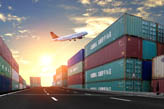Understanding Air Freight Costs: A Comprehensive Guide
Air freight costs are a critical factor in logistics and transportation, especially for businesses requiring fast and reliable delivery. Understanding these costs can help you make informed decisions and optimize your supply chain. In this article, we’ll break down the key factors that influence air freight prices and provide tips to minimize them.
Factors Influencing Air Freight Costs
1. Weight and Volume: The most significant factor in air freight costs is typically the weight and volume of your shipment. Heavy and bulky goods require more resources, such as packaging and fuel, which directly impact the cost.
2. Destination: The distance and location of your destination can significantly affect air freight prices. Flights to major hubs are generally cheaper than those to smaller cities.
3. Seasonality: Air freight rates may vary depending on the time of year. Peak seasons, such as holiday periods, often have higher costs due to increased demand.
4. Transportation Method: There are different classes of air freight services, such as Express and Economy. Choosing the right class can help you balance speed and cost.
5. Dry van vs. refrigerated: Dry van and refrigerated trucks have different costs depending on the temperature requirements of your goods.
By understanding these factors, you can negotiate better rates and choose the most cost-effective option for your needs.
Conclusion
Air freight costs can vary based on several factors, including weight, volume, destination, seasonality, and transportation method. To minimize these costs, consider the urgency of your shipments, negotiate with freight carriers, and choose the right transportation method for your goods. By taking these steps, you can ensure that your air freight operations are cost-effective and efficient.
